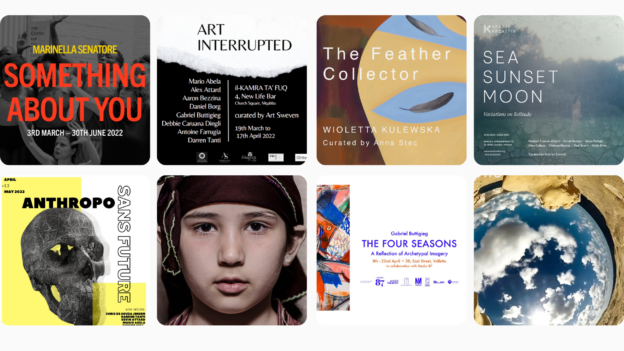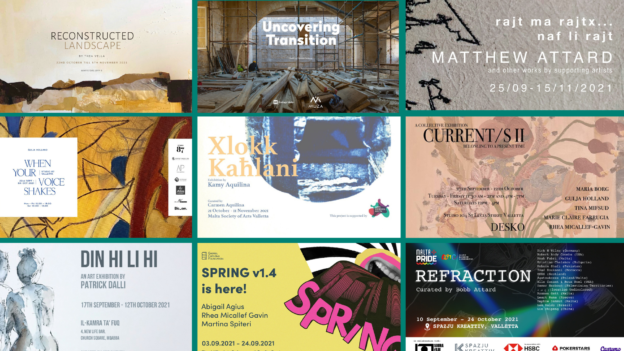The Artistic Process and the Finished Artwork

An image that often comes to mind when one visualises the creative process, is that of a creator chipping away at a block of marble with the intention of extracting and, ultimately revealing what is hidden within. The creator would seek to carve it into a new shape entirely and to ultimately present the finished product to an audience, demonstrating his power to summon something innovative into existence. Or perhaps, rather than summoning, this act of sculpting seems to imply that the final creation comes into being from the assembling of pre-existing elements. The many diverse ways in which art can be moulded into shape has led to much discussion in the philosophy of art. How it is made, a seemingly obscure or divine impulse that compels one to create, remains an enigma to both artists and non-artists alike.
The quest for originality in art-making, and for successfully evoking emotion in the individual who perceives an art work, are ones that prop up quite regularly in the discussion of the process that leads to the creation of art. One might argue that, despite the obscure nature of the question of why the creator chooses to create in the first place, what evokes that first brushstroke is ultimately a matter of conscious or unconscious motives and desires. The creator either creates in direct reaction to the possibility of acquiring approval or fame or any other vast array of combinations that differ according to the artist and time of day in question, or simply in reaction to needs that the creator is significantly less aware of. This, however, is a rather gross oversimplification, and to trace the threads of creativity would be a rather difficult undertaking; it is a matter that is slightly too vast to be given adequate justice here. The question of how, rather than why, an artwork is brought into existence will be explored further instead.

“What evokes that first brushstroke is ultimately a matter of conscious or unconscious motives and desires.”
The creative process
The creative process itself can be deemed to be that stretch of space that encompasses the mental and physical activity involved in the series of actions between the first fragment of an idea that embeds itself like a shard into one’s mind and the final stroke of a utensil that compels the creator to proclaim that his work is finished. The presence of a creative process is assumed to exist to begin with, almost as if it were this universal method or pattern of action that one should first discover and then follow in order to create a work of art. The habits and mediums that differ between artists are taken into consideration, of course, however an underlying creative pattern is nonetheless assumed to be universal.
When such a pattern is absent, however, the unfinished work of art presents its own particular direction or movement; each stage of the process that leads to the creation of an object generates its own possibilities for potential development. As the creator moves from one stage to the next, he does not make sure that he is expressing what he originally had in mind but, rather, he seeks to confirm whether he still wants to do so. According to an idea proposed by Vincent Tomas, it can thus be argued that the creative process can be considered to be an ‘error-correcting process’ where the artist is constantly compelled to reassess his/her original goals. The finished work of art is therefore dependent on the potential re-direction of his aims at any point in the stages of this process, rather than on the tasks established prior to the first brushstroke and with a fixed goal in mind. The process of creativity cannot be summarized as an exercise in problem solving, and the work can be considered to be finished only once no further tasks at each stage are presented.

“The creative process can be considered to be an ‘error-correcting process’ where the artist is constantly compelled to reassess his/her original goals.”
When is it a finished work of art?
The culmination of the creative process, or what can be deemed to be the culmination, is a subject that is much less discussed than the process itself. The point reached when enough has been added and enough has been taken away from a work of art is rather difficult to establish. The creators themselves, of course, implicitly know when they are finished from their own creation, however this is quite different from stating that the artwork itself is completed. This is because, when the creator has proclaimed the completion of his work, one is inclined to question whether the seemingly finished artwork is capable of standing by itself without any further additions or subtractions, and whether its potential as an implement of aesthetic enjoyment has been reached. This threshold of enjoyment varies considerably from individual to individual, and the point at which an artist deems himself to be content with his creation is also rather diverse.
By carving pre-existing elements into the shape of an artwork, the artist is able to manipulate his medium with the intention of coercing his creative idea into existence. One might argue that this view makes the artwork rather than the artist himself the creative subject, however a creation ultimately necessitates its creator and the creator cannot be absent or exist as separate from his creation. It is also true that one cannot impose the qualities of a work of art but, rather, the elements of the medium must be manipulated in order to enable the qualities that are already present to emerge. We are thus all condemned to be artists to some extent or other, and we are all spurred to continue our quest of creativity in light of the very tempting possibility that not all of these qualities have already merged thus far.
Opinion piece written by Melanie Zammit for ARTZ ID.





Responses